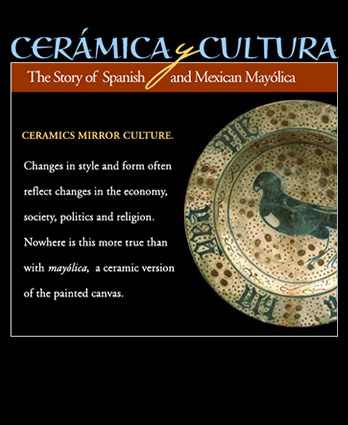Cerámica y Cultura: The Story of Spanish and Mexican Mayólica
Appropriate for grades: K - 12
Subject areas: History and Social Studies Visual and Performing Arts
Explore the forms and functions of mayólica objects to understand the cultural and historic contexts that formed them. The Iberian Peninsula, where mayólica reached its apogee with lusterware, was composed of a wide variety of cultures, religions and ethnicities. Trace the trade routes of these ceramic pieces and witness how the Mexican culture transformed this art form—an excellent example of vibrant intercultural exchange. The study of mayólica can serve as a jumping off point for students’ creative expression as they build their own self-identities in relation to peoples of other cultures and times.
Teaching / Learning Goals:
Teachers and students will understand…
- That the study of mayólica informs us about the history of the times in which it was created, the politics of those times, the dominant religions, the dress of the period, foods that were popular and the influences of the cultures that created it.
- That the creation of mayólica embodies relationships between diverse cultures and religions such as: Christians and Muslims, Spanish and Italians, Asians, Mexicans and Native Americans.
- That the spread of mayólica illustrates trade patterns and Spain’s global interactions.
- The artistic processes that are involved in the creation of mayólica.
- The changes the mayólica tradition has undergone and the sources of inspiration of contemporary mayólica artists.
